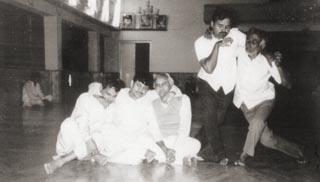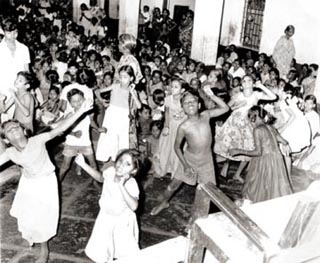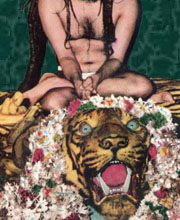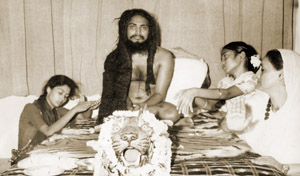Conventional Attitudes about Bhava
Heightened moods of ecstasy are a part of the bhakti tradition, the path of devotion, as well as all mystical traditions. But — there is something undignified and therefore unpleasant about spiritual trance. People supposedly in trance behave inappropriately, draw attention to themselves unnecessarily, and create disturbances. It follows that the basic conventional attitude towards spiritual trance is that it is self-induced or an act.
Convention tries to explain ecstatic states as something ordinary. People work themselves into ecstatic states through music or dancing or group pressure or simply their longing and desire for the experience. At best, such moods are only a beginner’s stage in spiritual development, one that needs to be overcome and discarded quickly.
To justify this conventional attitude from a spiritual perspective, the argument goes that spiritual practice should control the emotions, not exaggerate them.
A variation of this spiritual attitude allows the possibility that there may be a few cases of genuine trance, but for the rest of us, the phenomenon is self-induced or a show. Bhava, or at least true bhava, is something only the great saints experience. It is the culmination of long spiritual practice and discipline. Paramahansa Ramakrishna and Sri Chaitanya are obvious examples. The rest of us are simply not qualified to really have such intense spiritual experiences.
These conventional explanations of bhava — that it is either a beginner’s own excessive emotion, or the extraordinary attainment of great souls — trivialize spiritual trance for people in general. These conventional explanations are also irreconcilable with what Shivabalayogi did and said. His public programs consisted of meditation and bhajans (spiritual song). He wanted the songs to be lively — first slow, then fast, then very fast. Why? Because he wanted people to experience bhava.

![]()
“Higher souls induce it. Trance helps in physical, mental and spiritual progress.”
“During the bhajans, when you get astral bodies and bhava, Swamiji has astral bodies in them.”
“If you read the Tapas Shakti book, you will understand what is bhava samadhi. Instead, you can come here [Bangalore ashram] on a Sunday. Then you can see people in bhava samadhi and you will understand what it is.”
![]()
 In
short, the
conventional explanations that
trance is an act, a beginner’s
emotional state, or an extraordinary spiritual state reserved for the advanced,
are difficult to reconcile with what Shivabalayogi did. Granted,
Shivabalayogi's widespread use of bhava is highly unusual, but then, so was his
twelve-year tapas. The fact is, Swamiji was and remains very generous (and unassuming)
inducing the ecstatic experience in many, many people.
In
short, the
conventional explanations that
trance is an act, a beginner’s
emotional state, or an extraordinary spiritual state reserved for the advanced,
are difficult to reconcile with what Shivabalayogi did. Granted,
Shivabalayogi's widespread use of bhava is highly unusual, but then, so was his
twelve-year tapas. The fact is, Swamiji was and remains very generous (and unassuming)
inducing the ecstatic experience in many, many people.
Some suggest that in the early years it was mostly good but in the later years it was mostly misused so Swamiji discouraged it. That generalization is too simplistic. There are many examples of devotees misusing bhava for selfish purposes in the early years, even during the early "golden" years in Adivarapupeta, 1961 to 1963. In later years, 1988 to 1991, Swamiji encouraged devotees in the U.S.A. and U.K. to play bhajans well because he wanted to evoke trance in the West.
After Swamiji shifted his Bangalore ashram from Bannerghatta Road to the present site in nearby J.P. Nagar, the intensity of the bhava diminished. Swamiji told one man that it was because the devotees’ devotion had diminished. Even so, to this day one can witness the phenomena on many people in Bangalore. In Adivarapupeta, the intensity of the bhava became stronger after Swamiji entered mahasamadhi.
Most significantly, people who never knew Swamiji in his own physical body are getting bhava today.
![]()

